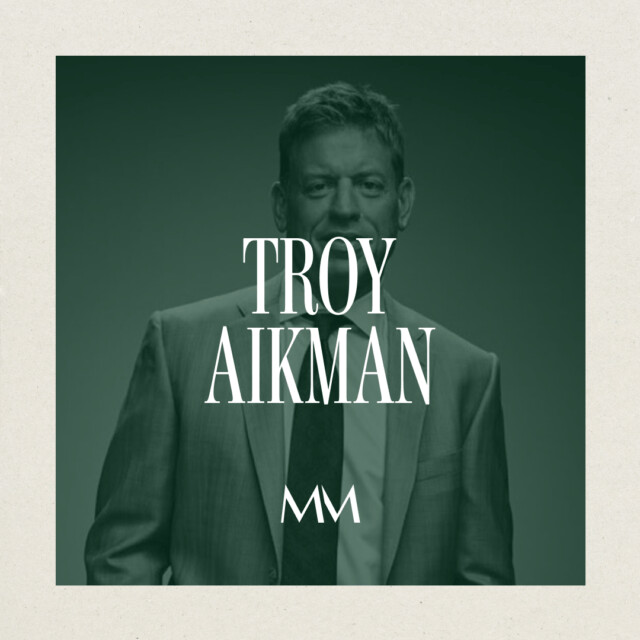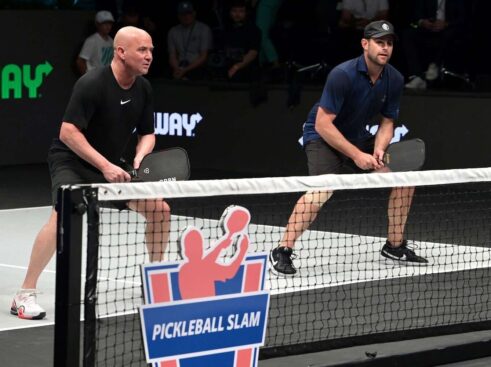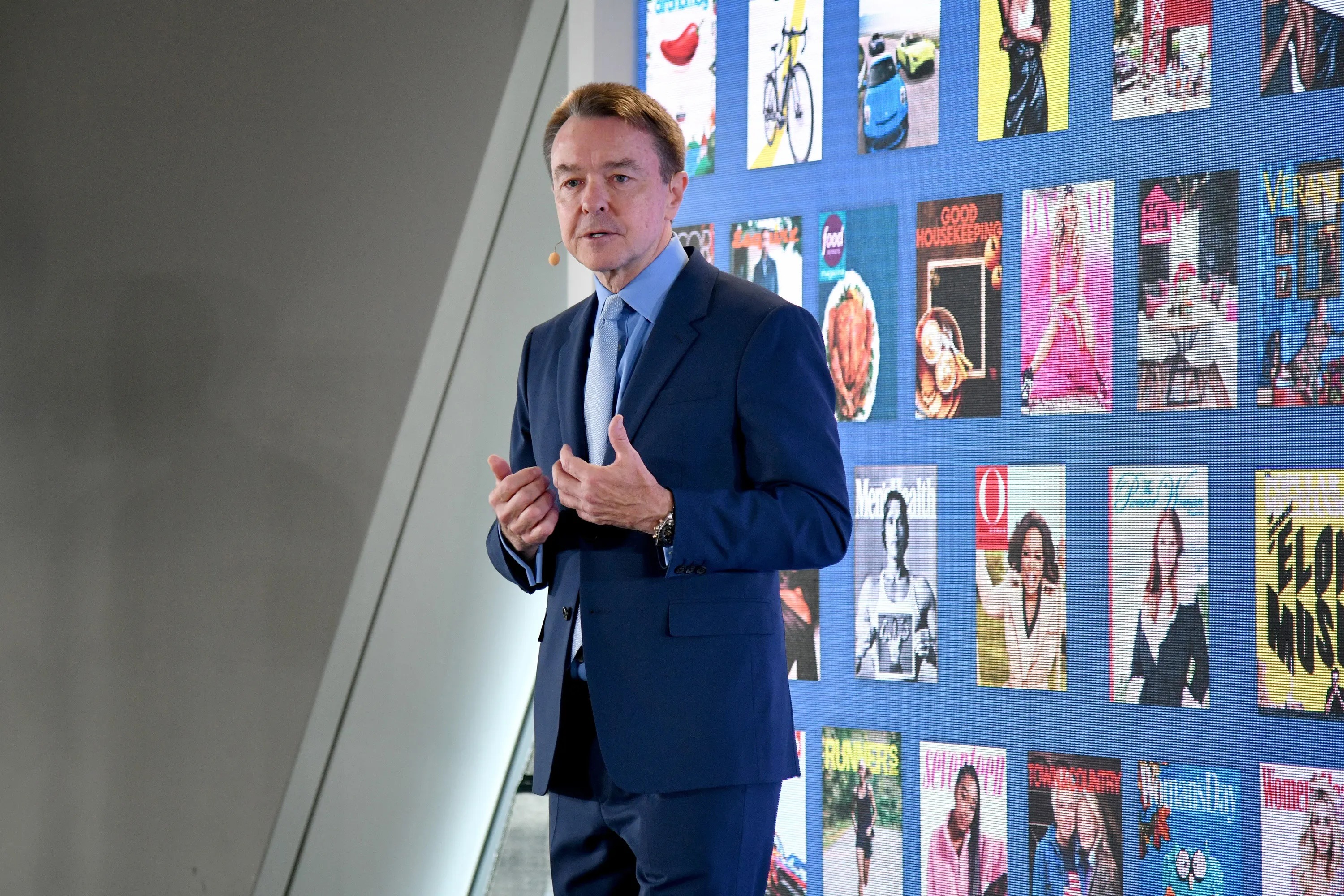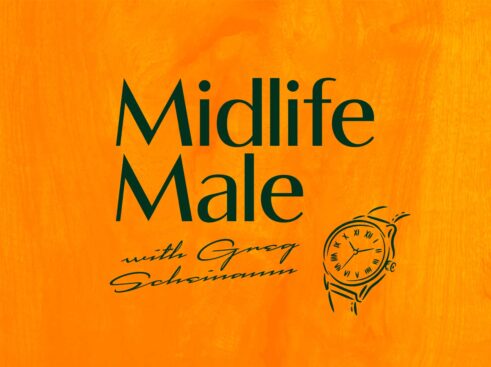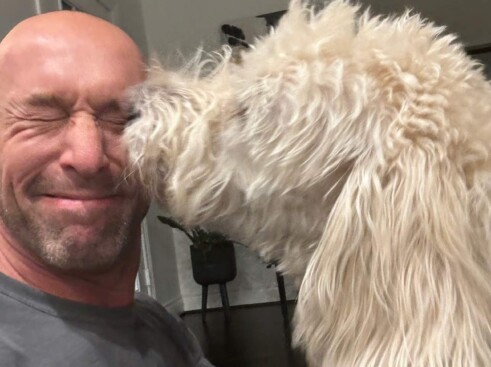Michael Clinton is an absolute powerhouse. In his 60s, he’s achieved tremendous professional success, pushes himself to the physical limit with rigorous training and annual adventures, dresses impeccably, and writes passionately about topics that matter.
He’s leading the charge on “roaring” into the next phase of life, using a blend of data and common sense to challenge companies, advertisers, and marketers to recognize the most powerful yet underserved consumer demographic in the world: us—the Midlifers. His latest book, ROAR Into The Second Half of Your Life, underscores his philosophy. Michael is also a writer-at-large for Esquire and a regular contributor to Men’s Health. The former president and publishing director of Hearst Magazines, he now serves as both CEO and founder of ROAR Forward and as a special media advisor to the CEO of Hearst Corporation.
Michael lives the ROAR Forward life. He’s a published photographer, has traveled to 126 countries, run marathons on all seven continents—including the Tenzing Hillary Mount Everest Marathon in Nepal—earned his pilot’s license, serves as CEO of a nonprofit foundation, co-owns a vineyard in Argentina, and holds multiple degrees (a bachelor’s, two master’s, and an honorary doctorate). He’s won numerous awards for his contributions to the media industry and his work in redefining longevity.
I got to know Michael when a friend passed along a copy of ROAR. I subscribed to his newsletter, and he graciously featured me as a “ROAR Re-imagineer” and in an article for Esquire. Since then, we’ve exchanged stories, experiences, and challenges, discussing how we approach life as we age and what we truly value. Michael is a wellspring of practical, relatable, credible, and aspirational knowledge—someone I look up to as he leads by example, helping me see what’s possible and probable as I move into my 50s and envision what the next stages in my 60s might look like.
– Greg
‘How I See It’ with Michael Clinton
MLM: Thank you so much for joining us. I’ve been following you both personally and professionally for a while, and it’s clear you’re a hard man to pin down with all your travels and adventures. You’ve really championed the idea of “roaring” into the second phase of life. Can you tell us a bit about the tipping point or epiphany that started you on this path?
Michael Clinton: Great question. My career started with me as the president of a major magazine company in New York City, managing titles like Esquire, Car and Driver, Runner’s World, Oprah, Good Housekeeping, Harper’s Bazaar, and many more. I’d reached the top of my game in the magazine business, even served as chairman of the Magazine Publishers of America. But I found myself ready for something new.
As I began to look around, I encountered this vibe that suggested I should start winding down—retiring to Florida, playing golf (which I don’t play, by the way). And I thought, “Wait, this isn’t for me.” I realized that with today’s life expectancy, especially if you’re healthy at 60, you could easily live to be 90 or even 100. That’s 30 or 40 more years of living! I wasn’t ready to just fade away.
So, I wrote a book called Roar Into the Second Half of Your Life to put my thoughts out there. It resonated with people—it’s now in its fourth printing, and I’ve launched a business around it. My “aha” moment was realizing that midlife is far from the end. In fact, it’s a time to think about what you want to do with yourself every day because the idea of traditional retirement just didn’t fit my personality.
MLM: I love that. I had a similar experience at 47—seeing midlife as a starting point rather than the beginning of the end. I lost my father when he was just 47, so for me, that age brought an awareness of time and opportunity. But as you said, today we’re healthy, with careers that have given us financial stability, and we’re looking at the next 20, 30 years as an open door. How did this mindset lead to the adventurous side of your life?
Michael Clinton: I actually had another realization around age 39 or 40. At that time, I was the publisher of GQ, which was an incredible job—dinners with actors like Cary Grant, cover shoots with Michael Jordan. I had a great family life, but I realized that I was becoming the most boring human on the planet because all I did was work. A lot of us fall into that pattern of identifying solely with our careers.
I decided to shake things up by taking a flying lesson, climbing Mount Kilimanjaro with friends, and taking a race car driving class (though I didn’t love the race car driving as much).
Those experiences reignited a sense of adventure in me. I ended up becoming a pilot, climbed more mountains, and ran marathons on all seven continents. For my 60th birthday, I even ran a marathon in Antarctica. I call it “life layering”—adding layers to life that are for you, beyond work or parenting. These layers keep you connected to who you are at your core.
MLM: I agree, that concept of “life layering” is powerful. You’re not only a corporate leader but also an unassuming adventurer. And you didn’t just drop everything to pursue this new path. How did you balance these passions with your professional life and relationships at home?
Michael Clinton: I call that “the big negotiation.” At midlife, many of us are 20-25 years into marriage or partnership, with kids maybe about to leave the nest. You’re rethinking how you want to spend your time, and that means communication with your partner. For example, a friend of mine, who worked on Wall Street, wanted to quit his job at 47 to get an education degree and teach math in inner-city schools. It was a huge shift, but he and his wife navigated it together, and now he’s doing it full-time.
These changes require open discussions and sometimes a quid pro quo. I have friends who took motorcycle trips across the country, but in return, they also supported their spouses’ aspirations. It’s a negotiation and a balancing act that respects each person’s growth.
MLM: That’s so true. Relationships evolve, and so do we. I’ve often heard of men wanting to reinvent themselves at midlife, and others who just want to release an aspect of themselves they’ve held back. Was your path something you’d always planned for, or did it just evolve?
Michael Clinton: My path was not linear at all. I came from a poor, working-class family in Pittsburgh, Pennsylvania. My father was a laborer, my mother was a homemaker, and of my high school class of 350, only about eight or nine went to college. So, I was the first in my family to go to college, which was a counterintuitive decision that set me on my journey. I showed up in New York with a degree, $60 in my pocket, and a couch to sleep on. I had no contacts or mentors, but I figured it out.
For anyone feeling stuck, I think you can apply that same spirit at any age. Whether it’s 40, 50, or beyond, it’s about embracing the skills that got you here and figuring out how to use them for the next chapter.
MLM: That’s a great point. We may be successful by traditional measures, but it’s about seeing the possibilities beyond that. You’re living proof that it’s never too late to make a change. I also loved your term “Reimagineers” for people who embrace reinvention. Can you talk a bit more about that?
Michael Clinton: Absolutely. We call them “Reimagineers,” and they’re featured on our website, roarforward.com, and in our newsletter. These are people over 45 who’ve made significant changes—whether in work, health, lifestyle, relationships, or even going back to school. We’ve collected over 100 stories that we share as inspiration. They’re role models for us and for future generations, especially as longevity increases.
Today’s five-year-olds, with good health care and early development, have a 50% chance of living to 100. So, they’ll have 60-year careers, multiple relationships, and economic lives that span a century. It’s important to have role models who show that living to 100 isn’t about slowing down; it’s about evolving and thriving.
MLM: Exactly! We’re redefining middle age, and I think it’s inspiring that both of us are over 50 and looking forward with that mindset.
Michael Clinton: Right. As life expectancy changes, so do our views on aging. For example, surveys now show people defining “old age” as 85 or even later, while it used to be considered 65. It’s really about doing the work to figure out what gets you excited and going for it. Whether that’s golf, hiking, or some other adventure, find your passion and dive in.
MLM: I couldn’t agree more. Thank you for sharing these insights. You’ve inspired me and, I’m sure, so many others.
